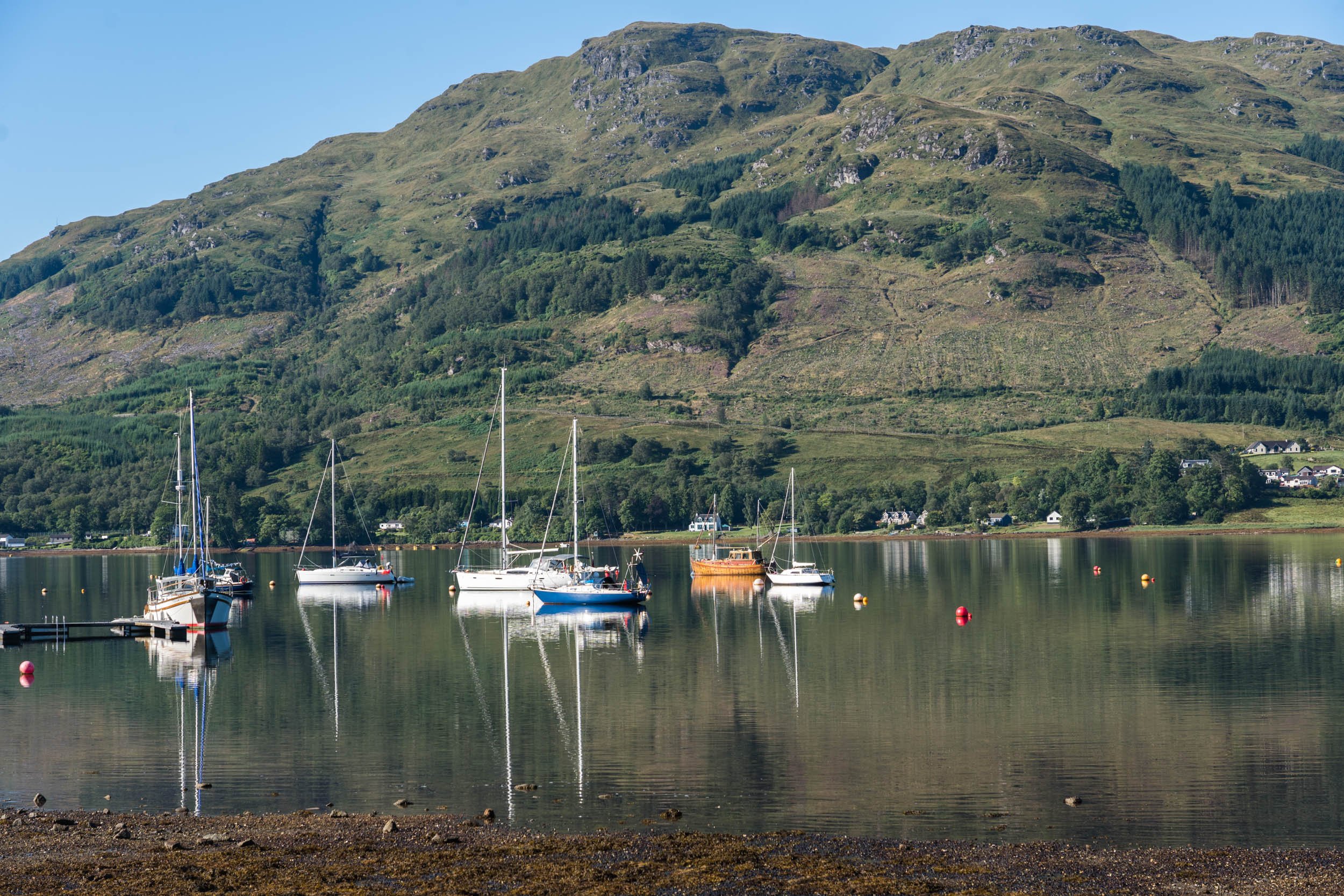
Historic Park People
Picture:
Celebrating Park History
In the story of an area as distinct as Loch Lomond and the Trossachs, inevitably certain historical characters will impact on the way we think about the area today. Sir Walter Scott invented a view of Scotland that was symbolised by The Trossachs. Rob Roy Macgregor became the archetypical clansman, while even the Romantic poets influenced the way visitors interpreted and enjoyed the landscapes. Later, writers such as Tom Weir and Ben Humble celebrated the wild spaces within the area - and thus also helped visitors make the most of what today’s National Park has to offer.
St Kessog (c. 5th century)
Kessog may have been born around 460AD and legends tell of this saint being especially holy even as a child. He came to the Luss area from Ireland to build a monastery on the island Inchtavannach right at the start of the 6th century. This was a strategically important site, close to the boundaries of Britons, Scots and Picts’ territories. He was martyred around 520-30AD, possibly murdered by Druids. He is sometimes described as Scotland’s first patron saint. As part of this cult, his memory was evoked, it is said, by King Robert before the Battle of Bannockburn. The Colquhouns were the hereditary protectors (dewars) of his shrines, and some say are descended from him.
St Mirren (6/7th century)
Though mostly associated with Paisley Abbey, as well as Paisley’s football club, St Mirren or Mirin is said to be also commemorated in the island Inchmurrin on Loch Lomond – that is, Mirin’s island. (Though some say it means innis na muirn – island of hospitality.)
St Fillan (8th century)
This saint came originally from Ireland, eventually settling in Strathfillan, where a church was built. He is particularly associated with a holy pool on the river with curative powers for the insane. The site is close to the route of today’s West Highland Way.
St Kentigerna (died c. 730AD)
This female saint decided to become a hermit or recluse, after she was widowed. She is sometimes described as the patron saint of Loch Lomond after setting up on Inchcailloch - the ‘island of the old women’ referring to the nunnery that she founded there.
Mary Queen of Scots (1542-1587)
Perhaps the most famous and intriguing of Scotland’s monarchs, Mary ‘s main association with the National Park area is her connection to Inchmahome Priory, on an island in the Lake of Menteith. She was sent there for safety, before her departure for France, when she was five years old. To the west, just beyond the edge of the Park, Doune Castle has 'Queen Mary's apartments' - noted for their early form of central heating!
Rob Roy Macgregor (1671-1734)
Perhaps the most famous figure associated with the area – cattle dealer, protection racket operator, folk hero, swordsman of repute, tartan Robin Hood – whatever the description, Rob Roy lived through one of Scotland’s most turbulent times, spending most of his life within today’s Park boundaries. Read More
Queen Victoria (1819-1901)
Victoria made many journeys through Scotland in her long reign. This included in September 1842 a trip along Loch Tay to Killin and over Glen Ogle to Lochearnhead. This was the occasion when the Queen remarked in her diary of Glen Ogle’s resemblance to the Khyber Pass! There was also an extensive visit to Callander and the Trossachs in 1869. (They stayed at Invertrossachs House, which had had its name changed from Drunkie House as this was thought to be inappropriate! Loch Drunkie is still nearby.) Amongst their many excursions was one to Loch Lomond and also the Lake of Menteith.
Rev Robert Kirk (1641-1692)
The Rev Robert Kirk was a brilliant scholar though a man of strange habits! While minister of the church at Aberfoyle, he took to wandering about the nearby Doon Hill late at night, sometimes lying down with his ear to the ground and murmuring as if in conversation. He then wrote a book called 'The Secret Commonwealth of Elves, Fauns and Fairies' at a time when the church (unsurprisingly) frowned on such dabblings. In 1692, he was found dead in his nightshirt on the hill. Some say he was trapped in Fairyland. Read More
Robert Burns (1759-1796)
On a notable Highland tour in 1787, after the success of his famous ‘Kilmarnock Edition’ of his poems, he wrote ‘I have lately been rambling over by Dumbarton and Inveraray, and running a drunken race on the side of Loch Lomond with wild Highlandman….Overlooking the National Park gateway town of Dunoon is a memorial to Burns complicated love-life: the statue of Highland Mary, Mary Campbell, with whom Burns intended to emigrate. She died in October 1786 and has been a source for romantic speculation ever since
Jules Verne (1828-1905)
French novelist Jules Verne, regarded by many as the pioneer of modern science fiction, visited the Trossachs and Loch Lomond in 1859, recording his impressions of the landscapes of these areas in a diary. He later called upon these reflections when writing ‘The Underground City’. This novel – part romance and part supernatural thriller - is set in the fictional community of the New Aberfoyle mine located beneath Loch Katrine. The steamboat SS Rob Roy, which Verne describes in his work, was, at the time of his visit, the ‘real-life’ cruising vessel on the loch.
Sir Walter Scott (1771-1832)
Scott promoted a new image of Scotland as a place full of Highland wildness and the vanished romance of the clans. He put the Trossachs firmly on the visitor map after the publication of the verse-narrative ‘The Lady of the Lake’ in 1810, filling the story with identifiable features in the Trossachs area -hills like Ben Ledi and Ben Venue, and features around Loch Katrine. Visitors can still see Ellen's Isle and the site of now covered over Silver Strand. Some places mentioned in the later Rob Roy (1817) can be seen from the 'Sir Walter Scott' steamer on Loch Katrine. These include Coire na Uriusgean, 'the goblins' cave' near where Rob Roy's band hid cattle, and Glengyle, just visible at the far west end, Rob's birthplace. Read More
Gerard Manley Hopkins (1844-89)
Gerard Manley Hopkins, a brilliant scholar, became a priest and burned all his early poems. He worked in several parts of the country, including Glasgow in 1881. It was during this time he is likely to have travelled by Loch Lomond and seen the foaming burn which tumbles steeply down from the ‘hanging valley’ of Glen Arklet to reach Loch Lomond at Inversnaid. This is the name given to his famous poem containing the well-known lines ‘What would the world be, once bereft / Of wet and of wildness ? / Let them be left, O let them be left, wildness and wet ;/ Long live the weeds and the wilderness yet.’
Robert Bontine Cunninghame Graham (1852-1936)
Scholar, travel writer and politician RB Cunninghame Graham inherited his father’s estate at Gartmore in the Trossachs. This exotic well-travelled character, with connections to the Spanish aristocracy through his mother and also connections with the Stuart monarchs of Scotland earned him the title of ‘the uncrowned king of Scotland’. He was in turn first President of the Scottish Labour Party and later held the same title with the newly-founded Scottish National Party. A cairn to commemorate him was erected in 1937 at Castlehill, Dumbarton and moved to Gartmore in 1981.
Tom Weir (1914-2006)
Glasgow-born Tom Weir, climber and writer, was in the early wave of enthusiasts who explored new climbing routes within easy reach of Glasgow. After war service he became a Ordnance Survey surveyor before climbing and writing full time. A passionate conservationist, he also hosted the tv series Weir’s Way (1976-1987). He latterly lived at Gartocharn and was a committed supporter of the Friends of Loch Lomond and The Trossachs. He is buried at Kilmaronock Parish Church, near Drymen. Read More
Ben Humble (1903-77)
Dumbarton-born Ben Humble was a dentist by profession, but is best known for his Scottish mountain climbing exploits, as well as his prolific output as a Scottish mountain and guidebook writer. As well as producing many classic and sought-after accounts of climbing on a variety of Scottish hill ranges, he also pioneered the shorter pictorial guide for visitors. These included some for various parts of today’s National Park, e.g. Arrochar and also The Trossachs, which were extremely successful.
